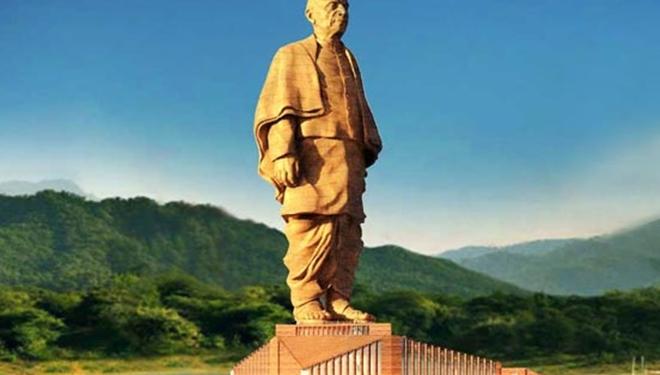31st October 2018 – This date is going to be remembered in the modern history as the day the “New India” announced its arrival on the world stage – the India that has the vision, strength of character and the technological capability to achieve something so unthinkable by the previous Indian standards. However, the Statue of Unity has had its share of critics as well. We have heard criticism ranging from “why waste so much money on a statue when so many people are poor and hungry in the country?” to “what about environment?” and “why not use to money to generate employment for the youth?”. This article aims to answer all those questions and provide a holistic view and a rationale behind creation of this statue.
Question 1: – Why waste so much money on a statue when so many people are poor and hungry in the country?
Based on the recent world bank report, India has shed its infamous title of highest number of people living in extreme poverty. More than 44 people in India come out of poverty every minute and as an economy it can also jump from 2nd largest to 3rd largest by the end of this year. There are a number of schemes run by the government for poverty alleviation which include Deen Dayal Upadhyaya Grameen Kaushalya Yojana, Roshni: Skill Development Scheme for Tribals, and so on. All these schemes are doing a great job for moving people out of poverty. Apart from that, Antyodaya Anna Yojana ensures that poor people get food at subsidized rates so that they don’t have to go hungry to bed each night.
Question 2: – Why not use the money for sick and the elderly then?
Modi launched ‘world’s largest’ health insurance scheme. Ayushman Bharat program dubbed ‘Modicare’ promises to insure 500 million poor people across the country.1.5 lakh people have already benefited from Ayushman Bharat scheme within 1st month of launch. So, I think Modi got this covered too.
Question 3: – Why not use the money to build infrastructure and roads in the country?
Modi government got this covered as well-
- National Highway construction hits record 28 km a day in 2017
- Government to construct rural roads at 10 km per hour in next 14 months
That’s right! 10 kms per hour equals approximately 1,00,000 km roads in the next 14 months!
Let’s look at the whole exercise from a purely economic perspective. The cost of the statue is approximately Rs 2,989 crore, which houses valley of flowers, an observation deck, the Sardar Patel memorial, museum and audio-visual gallery, along with a 3-star hotel, a shopping center and a research center. The ticket to the statue is kept at Rs 350 and an average of 15,000 – 20,000 people are expected to visit the statue daily, considering Taj Mahal gets around 40k visitors each day. Going with the average, the total earnings just by selling the tickets comes out to be Rs 200-250 crore. This does not even include the earning through the 3-star hotel rooms and the shopping center. So, only by considering the ticket earning, the entire cost of the statue can be recovered in approximately 12-15 years. Moreover, the government has already said that it would like to conduct international and national conferences and summits in the statue premises, which would add to the total earnings. Not a bad deal for the tallest statue, I think.
Furthermore, since this is bound to be a major tourist attraction for the world, the economic and tourist activity surrounding this project is bound to grow in the coming years. Tourism is the largest provider of employment in the world today, starting from hotels, restaurants to taxis and guides. This statue guarantees a lot of employment opportunities to the people in the surrounding areas in the coming years. This is significant especially because the area where the statue is located is predominantly a tribal area and tribal people are the one most in need of alternate employment. The employment generation and business potential of the Statue of Unity can be accurately predicted by calculating the economic activity generated by the Kankaria lake front in Ahmedabad or Taj Mahal in Agra.
The metal and soil used for the construction of this statue has been taken from farmers who were asked to donate their old and unused farm equipment for this project. So, this serves as a great example of application of “best out of waste” philosophy that we hear every now and then.
Creating the world’s tallest statue is, by no means, a small feat, considering the planning, design and execution, everything happened in India and was done by Indians. With this statue, Modi has basically shown to the world that we can build anything the world want us to build. We have the talent and the vigor to achieve it. If we can do it for us, we can do it for you too. Statue of Unity will serve as the largest endorsement of the talent that India possess.
It is nobody’s case that Modi has done well on almost all fronts – economic, social, poverty alleviation and cleanliness. However, what Modi has demonstrated with the Statue of Liberty is more fundamental, that Indians can dream big and execute big whenever there is a political will. In fact, thinking big has been the hallmark of the Modi government, whether it was creating bank accounts for the poor, swachh bharat or rolling out the world’s largest health insurance scheme and nobody can fault him for breaking the age-old mould of thinking small.


































